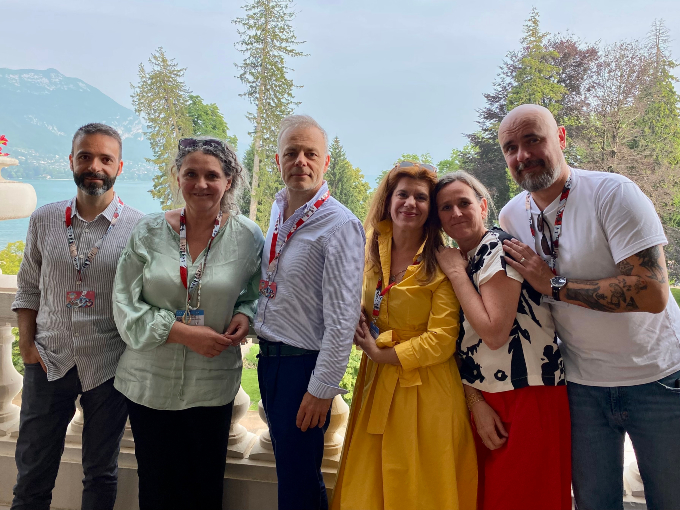Gearing up for a new term with a handful of key issues in focus, Animation in Europe (AIE) has announced new members and a newly elected board.
This federation of European animation producer associations has added Austria (ASIFA Austria), Latvia (LAA), Croatia (HRUP), Hungary (APA) and Slovakia (APAF) as full members, plus Armenia (AAA) as an associate member. AIE now represents 27 European countries—made up of 24 EU nations plus the UK, Norway and Armenia—as well as 30 professional associations.
During this week’s Annecy Festival, the org also elected its board of directors for the 2025/2026 term. Re-elected members Philippe Alessandri from France (AnimFrance), Ivan Agenjo of Spain (DIBOOS/ProAnimats) and Ireland’s Moe Honan (Animation Ireland) are joined by board newcomers Annemie Degryse (Belgium Flanders, VOFTP), Robert Jaszczurowski (Poland, SPPA) and Reka Temple (Hungary, HAPA). Key appointments, including the AIE president and VP, should be finalized during the first board meeting in late June or early July.
The new board will lead the way on four strategic priorities that AIE has outlined for its 2025/2026 term. Among these is a focus on opening up more “constructive dialogue” with European broadcasters to rethink the business model in order to better support toons. In today’s challenging TV market, a more unified effort is key to address structural issues, says Alessandri, chairman of AIE and founder of Watch Next Media.
To that end, AIE is hosting a MIFA conference this Thursday called “All in the Same Boat,” where Alessandri will moderate a panel of representatives from BBC Children’s, France TV, Super RTL and YouTube to spotlight possible solutions.
“It’s not economically viable to have a series produced with more than 50% of public financing,” says Alessandri, noting that this has become more common today regardless of which country the producer is from. “We need to have a market and to have private investment.”
AIE is eager to spearhead this conversation now, when licence fees are often not high enough to cover production costs, he adds. One of the ideas he’s looking to put on the table is to charge the same license fee for a 52 x 11-minute series but only deliver 40 episodes instead of 52—an approach that could work due to the inherent repeatability value of kids animation compared to other genres.
“It’s not like an adult drama where you’re losing money if you get fewer episodes for the same money,” he says, noting that reducing the number of episodes would also increase the budget by as much as 25%—which is the financial shortfall for most producers.
As for AIE’s three other priorities, the first is to shore up more support for the US$4.2-million academic study ANIMA MUNDI, which was announced in December as part of an effort to more closely examine the animation industry in Europe.
On the green front, the org’s second imperative is to develop a European carbon footprint calculator that’s tailored for the animation industry—an important distinction compared to those like Albert (the UK carbon calculator) that measure the footprint of live action, Alessandri says.
And last but not least, AIE is also prioritizing an upcoming revision of the Audiovisual Media Services Directive (AVMSD) to build stronger support for the EU animation sector, while also reflecting on the goals that have been achieved over the past eight years.
Pictured at top is AIE’s 2025/2026 board of directors (from left to right): Ivan Agenjo, Moe Honan, Philippe Alessandri, Reka Temple, Annemie Degryse and Robert Jaszczurowski.
























